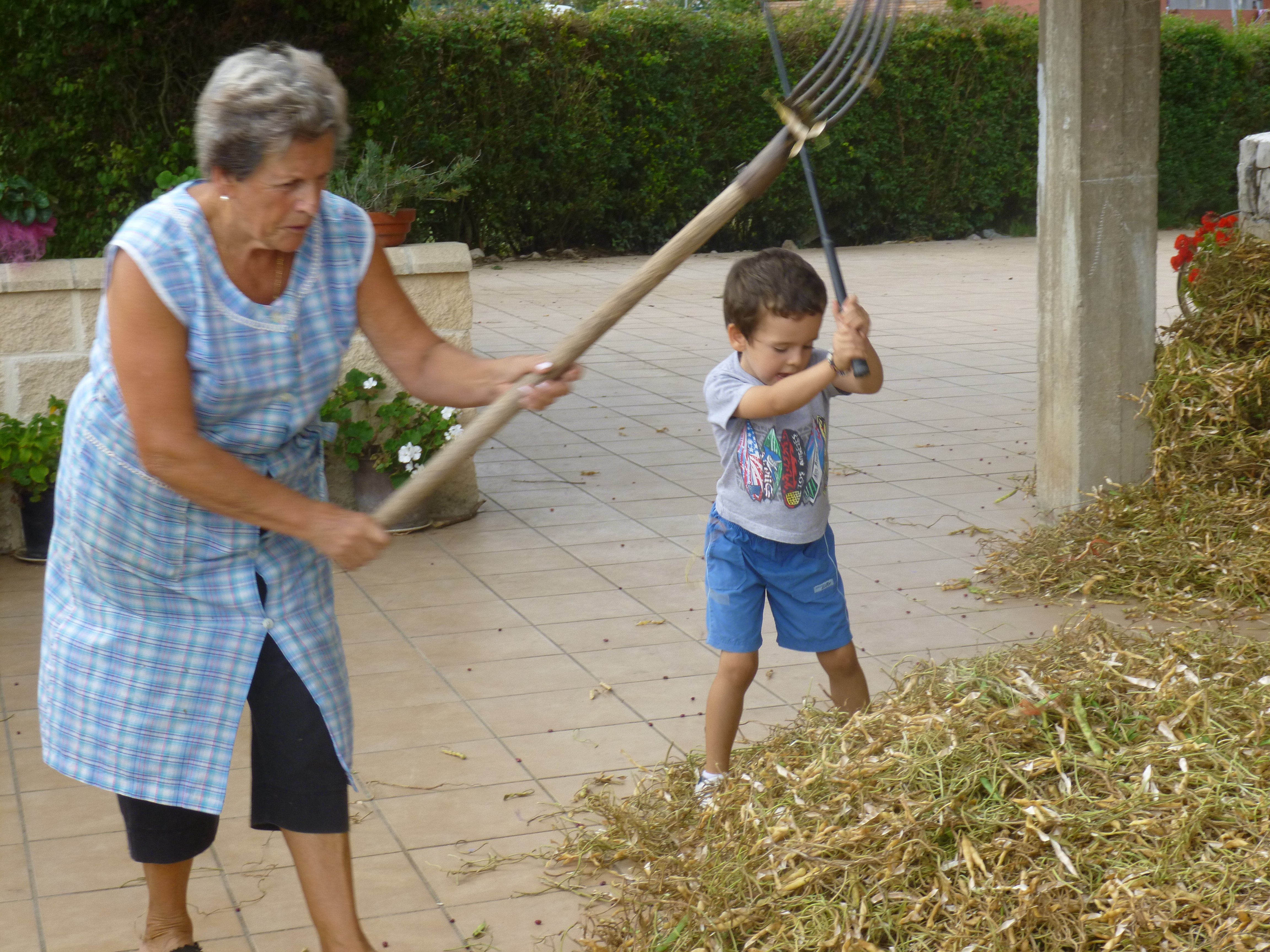Archives

Transportation of milk churns by cart. Neighbourhood of Ambasaguas in Carranza (Bizkaia), 1958. Courtesy of Miguel Sabino Díaz.
The economy of our society of generations past was very nearly self-sufficient, with hardly any money involved. Payments in kind and bartering among neighbours were common practice. Only a handful of items were purchased: salt, sugar, oil and tobacco. And depending on locations and circumstances not even those, as in the following instances. In surroundings close to salt mines across the territory locals were well supplied for salt. Some keen smokers cultivated tobacco; others contented themselves with the leaves of native plant species. Once dried and cut, the vegetable remains were rolled in the lighter inner husks of maize. Olives were grown in the south of the country, so cooking oil was readily available. Animal fats, namely tallow and lard, were often used instead of oil in areas not suited to olive growing. Little sugar was consumed, honey being its natural alternative. In time of shortage the traditional farmstead was virtually a complete autarky from the point of view of food sovereignty. (more…)

Grandmother threshing dry beans with her grandson. Akaitze Kamiruaga. Labayru Fundazioa Photographic Archive.
My father could well have been born in the Neolithic on the basis of his experience in fire matters, a sustainable use of wild living resources, his woodworking skills or the knowledge he possesses of certain farming techniques. Until electric light came to the house when he was a young boy, fire was the only form of lighting and cooking. The use of electricity to produce light entailed a genuine revolution, and every other new development sprang from it, including the move to digital technology. Unleashed by mechanisation, major transformations happened at the beginning of the 1960s, when I was born. My earliest pictures show a child perched on a cart drawn by a pair of oxen. My grandfather lived the days ox-carts were made entirely of wood, without metal parts, carts that he himself built for fellow neighbours. Many of my old schoolmates are industrial dairy farmers now; some of them even resort to robots for milking their cattle. Since the dawn of agriculture until my father’s childhood years, advances in the rural world had occurred at a steadily increasing pace, nothing like the exponential growth experienced in the transit from his generation to mine. (more…)

